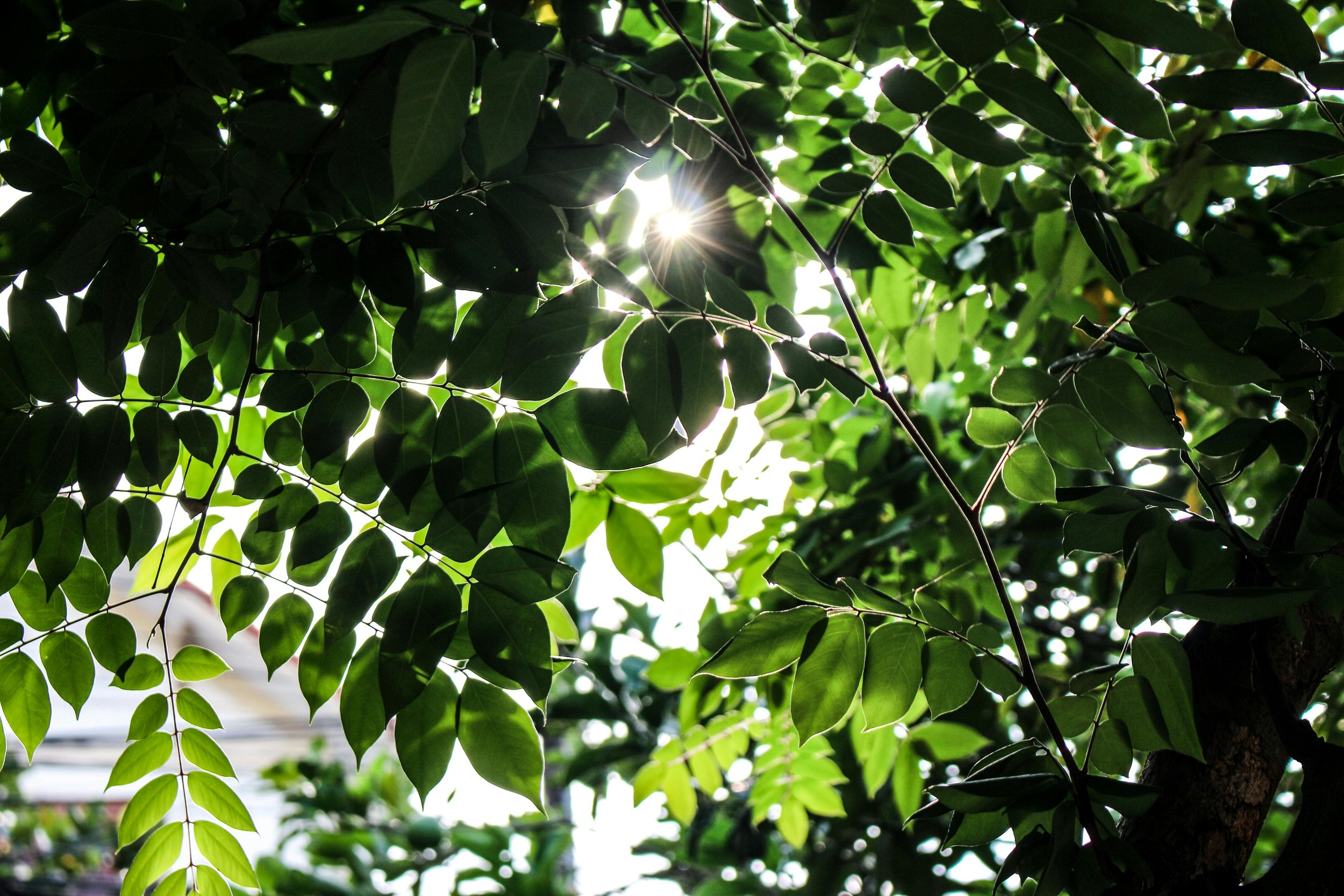
Welcome to the
Tree ID Trail
Red Maple
Acer rubrum
At the Rye Nature Center, the Red Maple thrives, thanks to its resilience in urban settings. This tree is a visual delight, boasting red stems, buds, and leaves. Its distinctive leaves have three lobes with sharp, shallow sinuses and a pale underside. Spring brings red flowers and samaras (helicopter like seeds) , while autumn paints the tree in brilliant red hues. The samaras' wings hang gracefully, almost parallel.
Norway Maple
Acer platanoides
The Norway Maple was brought here as a tall, fast growing street and park tree. Unfortunately, it escaped to our forests and is now considered to be invasive. Its broad thick canopy casts a heavy shadow which prevents sunlight from reaching the ground, thus native wildflowers lack the necessary light to bloom.
The leaves have 5-7 sharply pointed lobes, each approximately the same size, rounded sinuses, and a wavy margin. Very similar to the Sugar Maple, but with leaves usually wider than tall, in contrast to the Sugar Maple whose leaves are taller than wide. A good field marking is that when the leafstalk is cut, it exudes a milky sap. Flowers bloom in May, but the fruit ripens in the autumn, and the samara is widely spread, almost straight across, with flat nutlets.
Northern Red Oak
Quercus rubra
Oaks play a critical role in ecosystem health, serving as the host plant for a vast array of insect species. This rich insect diversity provides a crucial food source for numerous birds and mammals.
The leaves from this medium to large tree can grow to as much as 9” long and 6” wide. Note the many shallow lobes ending in the bristle-tips. Leaves are a dull green above; beneath they are a lighter green with occasional tufts of hair along the midvein. The acorns grow either singly or in pairs. They are broadest near the base and gradually taper to either a rounded or pointed tip; the saucer-shaped cap of the acorn covers only about ¼ or even less of the nut. The bark is distinctive in that the mature tree appears to have ski trails running the length of the trunk.
American Sycamore
Platanus occidentalis
To identify the Sycamore, one of the largest eastern forest trees, look for its characteristic mottled bark, where large scales peel away to reveal a light underlayer. Its broad, maple-like leaves, up to 8 inches wide, and the spherical brown fruit, which remains on the tree through winter, are also key identifiers.
Sweetgum
Liquidambar styraciflua
Here is another easily identified tree, both from the leaves and the fruit. The leaf is star-shaped, with 5-7 long pointed lobes and very finely toothed; it is dark green and shiny above, a lighter whitish green below. The fruit, a hard round woody ball with horn-like projections, contains the seeds. When the seeds are ripe, the holes in the ball open up and the seeds are ejected. The tree is called the Sweetgum because the gum which is obtained from the bark, has been used for soap, drugs, adhesives, or for chewing.
Tulip Tree
Liriodendron tulipfera
A towering presence in eastern woodlands, the Tulip Tree is characterized by its tall, unbranched lower trunk. Its uniquely shaped leaves, with a square base and lobed apex, are readily recognizable. Spring brings large, tulip-shaped flowers, which mature into cone-like fruits that remain visible through winter. This species prefers moist, well-drained habitats adjacent to lakes and streams.
Black Birch
Betula lenta
The Sweet Birch, also known as Cherry or Black Birch, is named for its wintergreen scent, released when the bark is scratched. Historically, its sap was fermented to produce birch beer. Young trees exhibit shiny, mahogany-red bark, which darkens with age, and prominent lenticels.
The oval-shaped finely toothed leaves are alternately attached and show hairy veins beneath, usually round at the base but often are slightly heart-shaped. They are 3-5 inches long with a tip which gradually, rather than abruptly, comes to a point. The veins are mostly straight although a few of them do fork near the margin.

Test Your Knowledge!
Shagbark Hickory Quiz Answers
Are the branches and leaves alternate or opposite?
The leaves are alternate! These leaves don’t grow from the same spot—or node—on the branch. A node is where a leaf or branch grows from the stem. Can you think of a tree (or find one here on the trail) that has opposite leaves instead? Here’s a hint: only a few trees in our area have opposite branching. Remember MADHorse—Maple, Ash, Dogwood, and Horse Chestnut.
Are the leaves simple or compound?
These leaves are compound. This means each leaf is made up of several smaller leaflets. A leaf grows from the branch on a petiole (that’s the little stem that attaches it). A leaflet, on the other hand, grows from the main leaf—not the branch! Can you count how many leaflets are on one leaf? Are there any other distinctive identifying features?
Are there any other distinctive identifying features?
Yes! One of the most noticeable features is the shaggy bark—it’s where the Shagbark Hickory gets its name. The bark peels away in long, curly strips. You might also spot its fruit. Look closely: the hickory nut is covered by a thick husk that often shows four intersecting ridges—a great clue that you’ve found a Shagbark Hickory!







